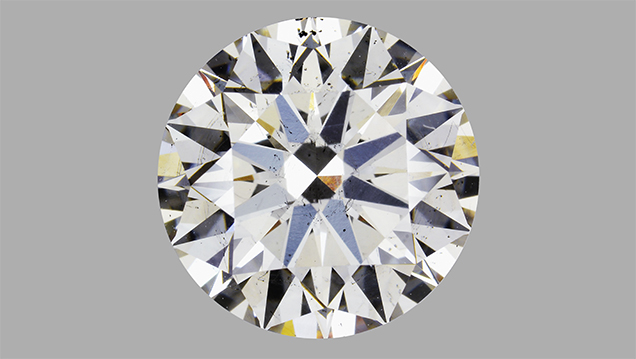Five CVD Synthetic Diamonds Greater Than Three Carats

The quality and carat weight of CVD synthetic gem diamonds has increased dramatically over the last ten years (S. Eaton-Magaña and J.E. Shigley, “Observations on CVD-grown synthetic diamonds: A review,” Fall 2016 G&G, pp. 222–245). Very recently a 6 ct round CVD synthetic was reported (“US lab creates 6ct. CVD synthetic,” Rapaport News, Feb. 1, 2018). However, we still only occasionally receive CVD synthetic diamonds for grading reports, and very rarely do these submissions weigh more than three carats. In fact, GIA graded its first CVD synthetic over three carats not long ago, in October 2015 (Winter 2015 Lab Notes, pp. 437–439), and as of January 2018 had only examined a total of eight. So it was quite interesting when, in late January 2018, we received five CVD synthetics simultaneously (four known to be from the same client) that were all above three carats. The quality factors for these five samples submitted for synthetic diamond grading reports are presented in table 1, and the largest of the five is shown above.

As table 1 shows, four of the five were in the near-colorless range and the smallest one was in the colorless range. Four had clarity grades equivalent to VS1 or VS2, while the largest was equivalent to SI2. All three round brilliants received Excellent cut grades. These results are consistent with a recent survey (Eaton-Magaña and Shigley, 2016), which found that a majority of D-to-Z CVD synthetics are in the near-colorless range (67%) and that a slight majority have clarity grades equivalent to VVS2–VS1.
In keeping with standard GIA procedure, we performed IR absorption and photoluminescence (PL) spectroscopy on all five samples. As expected for CVD synthetics, all were identified as type IIa, showed pronounced silicon-related peaks in their PL spectra, and displayed striations in DiamondView imaging that are characteristic for CVD synthetics. All except the 3.52 ct sample also showed nickel-related peaks at 883/884 nm in their PL spectra with 830 nm excitation. We expect that submissions of CVD synthetics in this weight range and beyond will become more common in the next few years.
.jpg)


